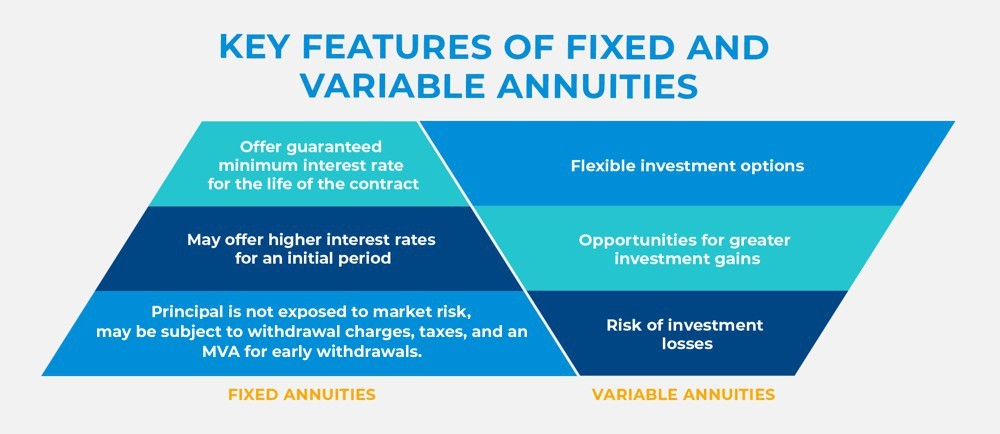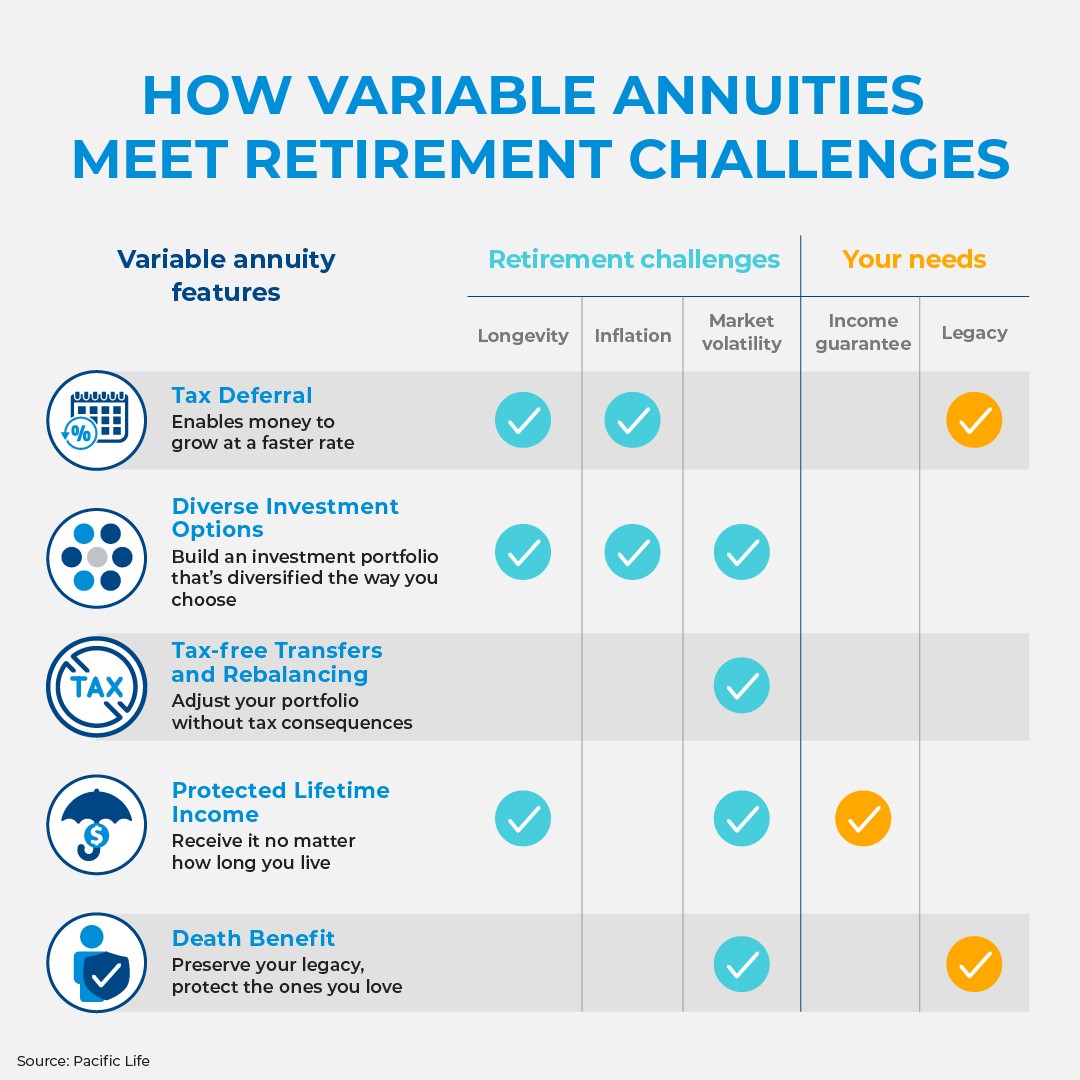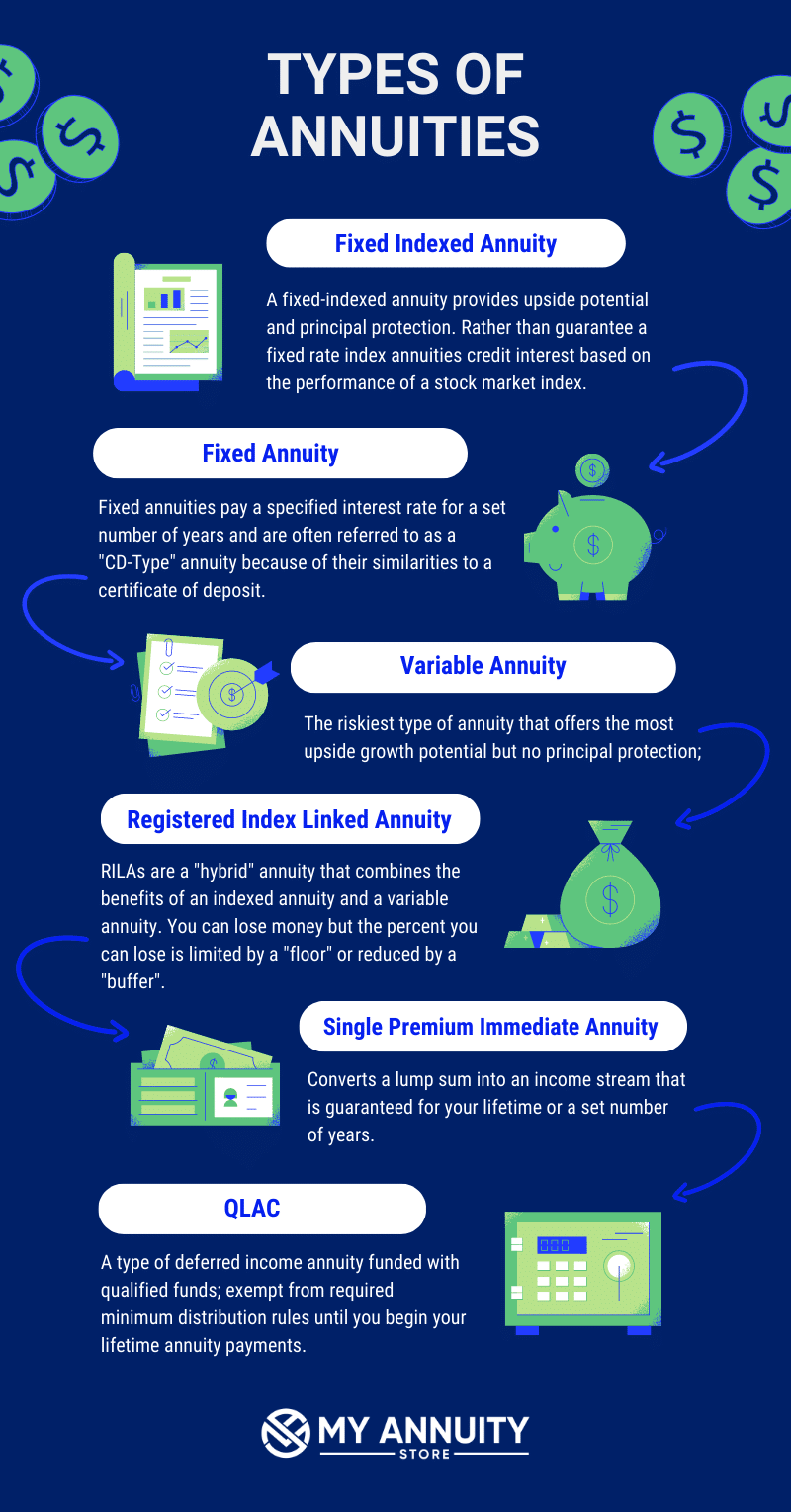All Categories
Featured
Table of Contents
Simply as with a taken care of annuity, the owner of a variable annuity pays an insurance coverage company a lump amount or collection of settlements in exchange for the promise of a collection of future settlements in return. However as mentioned above, while a repaired annuity expands at an assured, constant price, a variable annuity expands at a variable rate that relies on the efficiency of the underlying investments, called sub-accounts.

Throughout the build-up stage, properties purchased variable annuity sub-accounts grow on a tax-deferred basis and are taxed just when the contract owner withdraws those incomes from the account. After the build-up stage comes the revenue phase. Over time, variable annuity assets should in theory increase in worth until the contract owner chooses he or she want to begin withdrawing cash from the account.
The most significant problem that variable annuities generally present is high price. Variable annuities have a number of layers of fees and expenditures that can, in accumulation, develop a drag of up to 3-4% of the agreement's worth each year.
Understanding Fixed Income Annuity Vs Variable Growth Annuity Everything You Need to Know About Financial Strategies Defining the Right Financial Strategy Benefits of Choosing the Right Financial Plan Why Choosing the Right Financial Strategy Is a Smart Choice How to Compare Different Investment Plans: Simplified Key Differences Between Fixed Vs Variable Annuity Understanding the Risks of Tax Benefits Of Fixed Vs Variable Annuities Who Should Consider Strategic Financial Planning? Tips for Choosing the Best Investment Strategy FAQs About Planning Your Financial Future Common Mistakes to Avoid When Planning Your Retirement Financial Planning Simplified: Understanding Fixed Vs Variable Annuity Pros And Cons A Beginner’s Guide to Annuities Fixed Vs Variable A Closer Look at How to Build a Retirement Plan
M&E expense charges are determined as a percent of the contract value Annuity providers pass on recordkeeping and various other administrative prices to the contract proprietor. This can be in the form of a flat yearly cost or a percentage of the contract value. Administrative charges might be included as part of the M&E danger fee or might be evaluated separately.
These fees can vary from 0.1% for easy funds to 1.5% or more for actively managed funds. Annuity contracts can be personalized in a number of methods to offer the particular requirements of the contract owner. Some typical variable annuity motorcyclists include assured minimal accumulation benefit (GMAB), guaranteed minimum withdrawal advantage (GMWB), and guaranteed minimal earnings benefit (GMIB).

Variable annuity contributions offer no such tax reduction. Variable annuities often tend to be extremely ineffective automobiles for passing wide range to the next generation due to the fact that they do not enjoy a cost-basis adjustment when the initial contract proprietor dies. When the owner of a taxed investment account dies, the price bases of the investments kept in the account are adjusted to show the marketplace costs of those investments at the time of the proprietor's death.
Breaking Down Your Investment Choices A Closer Look at How Retirement Planning Works Defining Fixed Income Annuity Vs Variable Annuity Features of Smart Investment Choices Why Variable Vs Fixed Annuity Is a Smart Choice How to Compare Different Investment Plans: Simplified Key Differences Between Different Financial Strategies Understanding the Rewards of Immediate Fixed Annuity Vs Variable Annuity Who Should Consider Strategic Financial Planning? Tips for Choosing Indexed Annuity Vs Fixed Annuity FAQs About Tax Benefits Of Fixed Vs Variable Annuities Common Mistakes to Avoid When Planning Your Retirement Financial Planning Simplified: Understanding Annuities Variable Vs Fixed A Beginner’s Guide to Smart Investment Decisions A Closer Look at Annuity Fixed Vs Variable
For that reason, successors can acquire a taxable financial investment profile with a "fresh start" from a tax obligation perspective. Such is not the situation with variable annuities. Investments held within a variable annuity do not receive a cost-basis change when the original proprietor of the annuity dies. This implies that any kind of built up latent gains will certainly be passed on to the annuity owner's heirs, together with the associated tax obligation worry.
One considerable concern connected to variable annuities is the possibility for disputes of passion that might feed on the part of annuity salesmen. Unlike a financial advisor, that has a fiduciary duty to make investment decisions that benefit the client, an insurance policy broker has no such fiduciary commitment. Annuity sales are highly lucrative for the insurance policy specialists who market them because of high upfront sales commissions.

Numerous variable annuity agreements contain language which places a cap on the portion of gain that can be experienced by certain sub-accounts. These caps protect against the annuity proprietor from completely joining a section of gains that might or else be enjoyed in years in which markets create considerable returns. From an outsider's perspective, it would appear that capitalists are trading a cap on investment returns for the abovementioned assured floor on financial investment returns.
As kept in mind over, surrender costs can significantly restrict an annuity proprietor's ability to relocate properties out of an annuity in the very early years of the agreement. Additionally, while the majority of variable annuities permit agreement owners to take out a specified amount during the build-up stage, withdrawals beyond this amount commonly cause a company-imposed fee.
Withdrawals made from a fixed rate of interest financial investment alternative could also experience a "market price modification" or MVA. An MVA changes the value of the withdrawal to mirror any adjustments in rates of interest from the moment that the money was purchased the fixed-rate option to the moment that it was taken out.

Fairly usually, even the salespeople who market them do not fully recognize how they work, therefore salespeople sometimes victimize a customer's feelings to market variable annuities instead than the benefits and viability of the products themselves. Our company believe that investors need to completely recognize what they possess and just how much they are paying to have it.
Highlighting Tax Benefits Of Fixed Vs Variable Annuities Everything You Need to Know About Fixed Vs Variable Annuities Breaking Down the Basics of Investment Plans Advantages and Disadvantages of Different Retirement Plans Why What Is Variable Annuity Vs Fixed Annuity Matters for Retirement Planning How to Compare Different Investment Plans: Explained in Detail Key Differences Between Different Financial Strategies Understanding the Risks of Choosing Between Fixed Annuity And Variable Annuity Who Should Consider Choosing Between Fixed Annuity And Variable Annuity? Tips for Choosing Deferred Annuity Vs Variable Annuity FAQs About Planning Your Financial Future Common Mistakes to Avoid When Choosing Retirement Income Fixed Vs Variable Annuity Financial Planning Simplified: Understanding Fixed Vs Variable Annuity Pros And Cons A Beginner’s Guide to Smart Investment Decisions A Closer Look at Variable Vs Fixed Annuities
The very same can not be said for variable annuity properties held in fixed-rate financial investments. These assets lawfully belong to the insurance provider and would as a result go to risk if the company were to fail. Likewise, any type of warranties that the insurance provider has actually accepted supply, such as an assured minimum revenue advantage, would remain in concern in the occasion of an organization failing.
Potential purchasers of variable annuities need to recognize and consider the economic problem of the releasing insurance policy business before getting in right into an annuity agreement. While the advantages and disadvantages of numerous types of annuities can be questioned, the genuine issue surrounding annuities is that of suitability.
As the claiming goes: "Buyer beware!" This article is prepared by Pekin Hardy Strauss, Inc. Income annuities for retirement. ("Pekin Hardy," dba Pekin Hardy Strauss Wide Range Management) for educational objectives only and is not planned as an offer or solicitation for organization. The information and information in this post does not comprise lawful, tax obligation, accounting, financial investment, or various other specialist recommendations
Table of Contents
Latest Posts
Highlighting the Key Features of Long-Term Investments Everything You Need to Know About Financial Strategies Breaking Down the Basics of Fixed Indexed Annuity Vs Market-variable Annuity Features of S
Highlighting the Key Features of Long-Term Investments A Closer Look at Pros And Cons Of Fixed Annuity And Variable Annuity Breaking Down the Basics of Investment Plans Features of Smart Investment Ch
Highlighting the Key Features of Long-Term Investments Key Insights on Your Financial Future Breaking Down the Basics of Investment Plans Advantages and Disadvantages of What Is A Variable Annuity Vs
More
Latest Posts